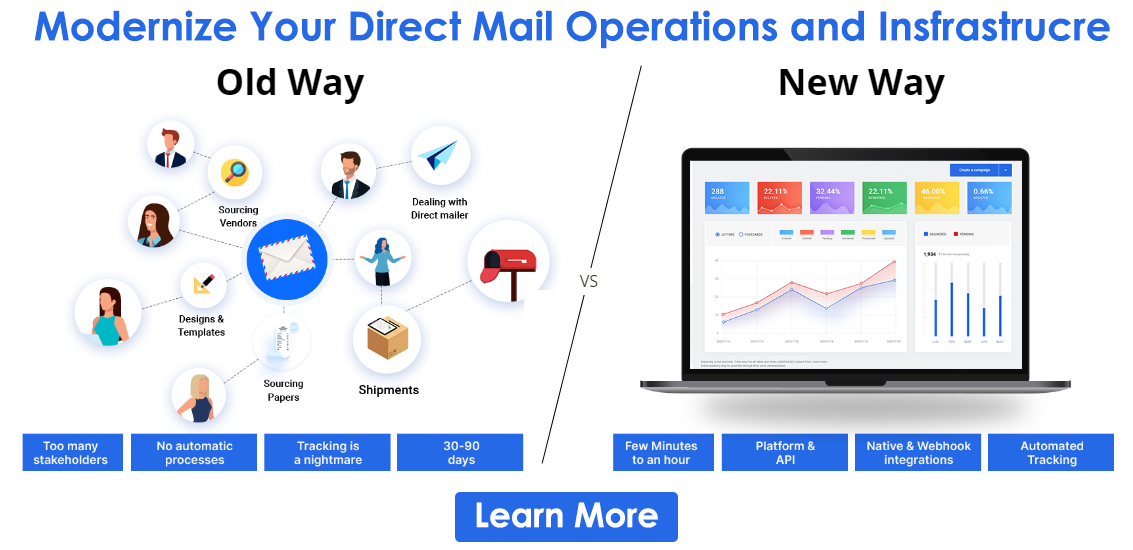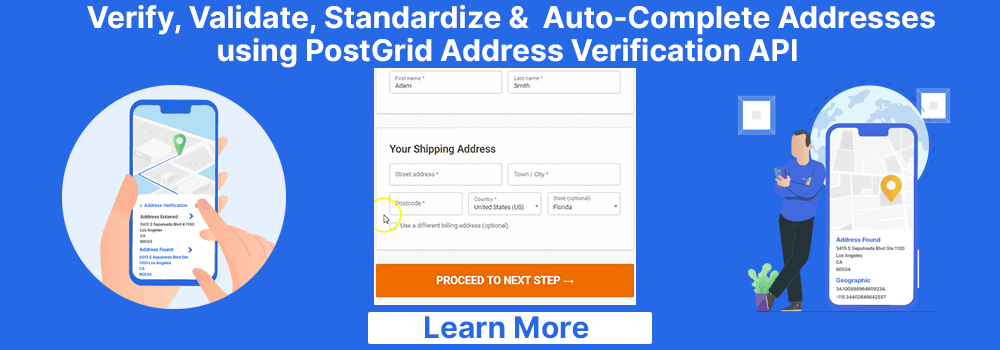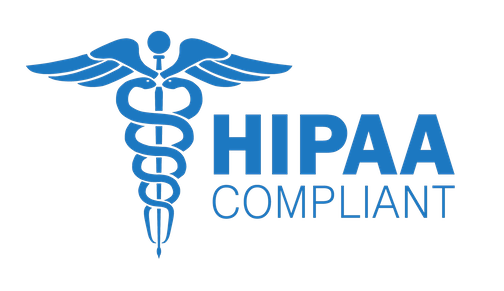
How To Ensure Effective Communication In Your Healthcare Organization?
Are you having trouble with your healthcare communication system? Are you struggling to optimize the communication of your healthcare organization?

Implementing effective and efficient communication is one of the hardest challenges for any healthcare organization. Advancements in technology and the arrival of automated solutions have significantly improved communication in healthcare organizations.
However, many organizations still struggle to implement these advanced solutions successfully. Hence, here we will discuss in detail the significance of communication in healthcare organizations and how you can optimize it efficiently.
Interhospital and Intrahospital Communications
Hospital communication can broadly be classified into two
- Interhospital Communication
- Intrahospital Communication
Healthcare organizations must ensure that their inter- and intrahospital communications are well-maintained. A lapse in either type of communication in healthcare could potentially affect the patient’s safety and well-being.
Interhospital Communication
Interhospital communication involves the sharing of information across multiple institutions and websites. The transmission of healthcare data between healthcare facilities owned by the same organization and between different healthcare organizations comes under interhospital communication.
Hence, this type of communication in healthcare is vital when a patient wants to move from one healthcare facility to another. The hospital would have to transfer the patient’s medical records to the new hospital or healthcare facility in such cases.
Healthcare service providers usually have a hard time optimizing their interhospital communications. It is estimated that the total loss due to poor interhospital communication is billions of dollars. For example, a patient may need to retake medical tests because the new hospital cannot access the previous test results.
As you can guess, any irregularities or mistakes in interhospital communication could lead to devastating results for the patient. Additionally, the healthcare provider must transfer any vital medical equipment the patient needs for moving to a new facility.
Intrahospital Communication
Intrahospital communication is the communication or transfer of healthcare data within a single healthcare institution. Every form of communication in healthcare facilities can be classified under intrahospital communication.
Assigning rooms to the patients, scheduling appointments/surgeries, and setting lab tests are all a part of intrahospital communication. Anyone who has ever worked in a healthcare facility will know that communication issues among personnel are not uncommon.
There is always scope for manual error in communication. However, healthcare organizations can minimize the extent of error with the help of the right set of tools and technologies. Any reluctance in the flow of information from the doctors, staff, or patients can also affect the other processes within the institution.
As a result, there could be delays in getting lab reports, discharging patients, or worse, it could be dangerous to the patient’s life. Lack of procedural coordination is also a consequence of poor communication in healthcare, leading to significant capital loss.
Common Healthcare Communication Methods
There are multiple forms of communication in every healthcare communication system. Healthcare organizations must make it a point to train their personnel to use communication forms or channels efficiently.
The training is crucial because even a minor mistake can potentially risk the patient’s safety. For example, a minor printing mistake in the lab report may lead the patient to take the wrong medication dosage.
Healthcare organizations can avoid such issues by using an automated print and mail system like PostGrid. Hospitals should always choose a computerized system for all their communication over manual ones. It enables you to minimize the chance of error in healthcare communication.
Some of the most common ways healthcare organizations can communicate and share healthcare information are listed below.
Exchange Of Patient Data
Patient records are perhaps the most vital data that a healthcare organization handles. Several rules and regulations surround the transfer and exchange of patient data. Patient data is protected by PIPEDA, or the Personal Information Protection and Electronic Documents Act in Canada.
We will elaborate more on PIPEDA and its significance in healthcare communication as we proceed further. For now, let’s say that you need to ensure that the exchange of patient data complies with all the relevant rules and regulations.
Ensure the data is shared securely across different platforms for your inter- and intrahospital communications. Accurate patient data is crucial in creating medical history documents for patients and providing appropriate medical care.
Sharing Healthcare Data With Colleagues
It is common for healthcare professionals to share healthcare information with their colleagues, especially for intrahospital communication. Proper healthcare communication is not possible without the participation of patients, doctors, lab technicians, and other staff.
Constant communication between all the parties mentioned above enables healthcare organizations to smooth out their processes. Furthermore, entering healthcare information accurately into databases and securely storing them is also a part of the inter-colleague collaboration.
It is especially significant for shared healthcare databases which different personnel use for their specific roles. Any inaccurate communication between the various departments of a healthcare organization can lead to database errors.
Sharing Of Healthcare Data With Hospital Leadership
By the end of the day, all healthcare organizations are businesses, regardless of whether they are publicly or privately owned. It is unavoidable for hospitals and other healthcare organizations to operate like a business when it comes to healthcare communication.
The hospital leadership, including managers, must frequently communicate with their staff and patients. By staff, we mean not just the doctors but also lab technicians, nurses, and other heads of operations.
The healthcare organization leaders are in charge of overseeing the administrative tasks and staff. Additionally, they also play a crucial role in developing healthcare plans. Hence, hospital leaders must have access to healthcare communication systems that provide an open communication line.
Best Healthcare Communication Strategies
Communication in healthcare can often be complex and multi-levelled. It involves communication between healthcare professionals and interactions with the patient. Additionally, it involves verbal and written strategies used to influence
- Individuals
- Populations
- Communities
It is also worth noting that communication for healthcare organizations utilizes multiple models and theories. Healthcare providers use these models and theories to bring a positive attitude among the masses about healthcare.
Some of the best healthcare communication and social marketing strategies you can use are listed below.
1. Research-Based Strategies
When it comes to the healthcare industry, never underestimate the value and effectiveness of research-based strategies. Develop research-based services and even products to pitch your healthcare offering to the public.
Additionally, you must be careful when you pick something that delivers the message to the target audience. For example, direct mail is often considered a more professional and reliable form of communication than online channels.
2. Cultural And Setting Considerations
Communication of all kinds, including healthcare communication, is closely associated with different cultures and settings. Hence, your communication strategies need to be considerate about the same. Failing to do so could result in failed campaigns and even affect your reputation.
Healthcare organizations must understand conventional wisdom for different cultures and settings. Furthermore, healthcare entities should consider the language, concepts, and priorities prevailing in different cultures.
3. Understanding The Target Audience
As with any communication and marketing strategy, it is crucial to understand the target audience. It would be best to consider several factors influencing the decision of the target audience or target population.
Health literacy is one of the prime considerations in healthcare communication because healthcare terms are not always understood equally by everyone. Hence, healthcare organizations must consider other aspects such as internet access, media exposure, etc., of the target audience.
4. Using Print Media For Healthcare Communication
Print media still plays a vital role in healthcare communication, and there is no denying that. Postcards, brochures, newspaper articles, billboards, pamphlets, etc., play a critical role in health communication. The public generally trusts the print media and considers them more reliable.
Healthcare organizations can use advanced direct mail software like PostGrid for printing and delivering their communication material. Using an automated print and mail solution enables you to avoid errors and easily personalize of your communication material.
5. Sit Down For A Detailed Interaction
Communication in healthcare largely depends on the interaction you have with the patients. However, this aspect of communication often goes ignored (although unintentionally) when the healthcare professional interacts with the patient personally.
Ideally, the patient and the healthcare professional need to talk long during hospital visits or check-ins. Such an approach will play a vital role in establishing trust with the patients. Furthermore, such interactions feel more intimate and encourage the patient to share all their healthcare information.
6. Always Ask Open-Ended Questions
Sometimes, It is not easy for patients to share their healthcare information, and they may not feel like voicing their health concerns. It can lead to several problems in healthcare communication. Furthermore, it can happen even after having an empathetic conversation with the patient.
Hence, doctors and other healthcare professionals should always use open-ended questions. Just asking the patients whether they have anything more to say can do wonders to your health communication.
Edging the patients on with an open-ended question allows them to reflect on their thoughts and voice their concerns.
BATHE Technique
The BATHE technique is an efficient way to ensure the quality of communication in healthcare organizations. It allows healthcare providers to ask questions to the patients in a way that solicits more information from them.
B – Background: Enquire the patient about their background or current situation
A – Affect: Ask the patient how their health concern affects them emotionally/physically.
T – Trouble: Question the patient about their problems or troubles regarding their present condition.
H – Handling: Ask the patient how they handle or deal with their current health condition.
E – Empathy: Ensure that the patient knows that you listened to their problems and acknowledge the issue with a verbal agreement.
7. Use Simple And Easy To Understand Language
Medical jargon is often too complicated and incomprehensible for the general public. Hence, it would be best to avoid complex medical terms in healthcare communication. Instead, healthcare providers should use easy-to-understand and straightforward language in all their communication points.
However, it is not always easy to do this, and sometimes, using medical jargon in your communications is inevitable. What you can do in such cases is define the medical term so that the patient can easily understand what it is about.
Doing so enables you to have two-way communication with the patients instead of the healthcare provider doing all the talking.
8. Ensure Confidentiality of Healthcare Communication
Technically speaking, most healthcare professionals in an organization can access a patient’s healthcare data. However, that does not mean that they should. Confidentiality is vital for healthcare communication.
Ensure that access to individual health records is limited based on a need-to-know basis. In other words, only the patient’s healthcare team should access their medical records. It also means that healthcare organizations should avoid casual discussions of the patient’s health issues outside the group.
9. Use of Interpreters or Culturally Competent Staff
Cultural differences can often become a sensitive subject with patients, and you need to avoid such issues at all costs. Healthcare providers need to ensure that their healthcare setting is an open and safe space for every person that needs medical treatment.
Any form of discrimination, such as racism, xenophobia, classism, homophobia, etc., should not be tolerated in a healthcare setting. Furthermore, you must show that you accept people of all backgrounds in your healthcare communication.
If needed, appoint interpreters for effective communication within your healthcare organization. It is the fundamental right of every individual to hear and be heard by a healthcare provider. The patient is also entitled to culturally competent treatment.
What is PIPEDA or PIPEDA Compliance?
PIPEDA, short for Personal Information Protection and Electronic Documents Act, is a privacy law in Canada. It protects the personal information of individuals and governs the collection, use, and disclosure of personal data by private sector organizations.
PIPEDA is one of the significant legal regulations that protects the healthcare data of Canadian citizens and plays a vital role in healthcare communication. Usually, PIPEDA-covered entities are required to obtain the consent of individuals whenever they collect data from them.
PIPEDA And Healthcare Information
PIPEDA is not an act that applies exclusively to healthcare information. It protects the personally identifiable information of individuals across all digital platforms. The personally identifiable information of an individual includes
- ID numbers
- Income
- Medical records
PIPEDA vs. HIPAA
HIPAA or Health Insurance Portability and Accountability Act is a privacy law that safeguards the Protected Health Information of US citizens. In many ways, PIPEDA and HIPAA compliance are the same. However, there are a few very distinguishable differences between the two.
The most significant difference between PIPEDA and HIPAA in healthcare communication is their applicability. PIPEDA applies to every field or industry, regardless of which entity uses the personal information of individuals.
On the other hand, HIPAA is explicitly created to safeguard PHI or Protected Health Information. Once an organization collects data from a Canadian, the organization becomes responsible for the data. However, such regulations don’t apply to the organization under HIPAA if it does not deal with PHI.
 Also Read: Laws Regarding Direct Mail Marketing
Also Read: Laws Regarding Direct Mail MarketingModalities of Healthcare Communication
Healthcare communication is usually preferably carried out over face-to-face interaction. However, written/printed communication is the most widely used communication model in the healthcare industry by all practical means.
Face-To-Face Healthcare Communication
There is no better way than a face-to-face conversation to get a full-blown discussion going. Face-to-face conversations enable all the parties involved to hear and see each other. Perceiving body language and facial expressions enhances your communication.
A few years ago, all healthcare communication was face-to-face, but that has significantly changed. Even though video conferencing uses modern technology, we can also classify it as face-to-face communication.
It is also undeniable that direct communication in healthcare has significantly reduced in the past few years. Other communication channels, like email, have now gained popularity because of their superior convenience.
Written/Printed Healthcare Communication
Despite the advancement of technology, a significant part of healthcare communication still happens through written/printed mediums. The most widely used written communication in healthcare is referral or discharge letters.
Referral letters can be further divided into three categories
- Assessment/treatment requests
- Second opinion requests
- Mutual responsibility requests
Furthermore, a healthcare organization sends several other forms of written or printed letters to its patients. Patient statements, lab reports, invoices, etc., are some of the commonly printed documents sent to the customer.
The print requirement for healthcare communication is often in bulk. Hence, the best choice for healthcare organizations is to employ a print and direct mail automation tool like PostGrid. Using an automated system saves you valuable time and money and streamlines your communication system.
 Also Read: What are Bulk Mail Services?
Also Read: What are Bulk Mail Services?Conclusion
Communication in healthcare is never easy. The healthcare industry requires you to handle a large amount of data and update them regularly. As a result, there is a significant chance of error in healthcare communication.
However, you can minimize the scope of error by implementing advanced technology-based solutions and automation capabilities. PostGrid is a perfect example of how advanced solutions can help you streamline your healthcare communication.
Using a system like PostGrid, you can automate your bulk printing requirements. So, you can print and deliver important healthcare documents such as patient statements, lab reports, invoices, and more. As the whole process is automated, there is no scope for error, and it streamlines your communication.
PostGrid also offers an address verification API that lets you ensure the validity of your patient’s address. More importantly, PostGrid is compliant with regulatory standards like PIPEDA and HIPAA, which allow you to send direct mail communications within and outside Canada.
| You may also want to read | |
|
1. |
What is an EHR? |
|
2. |
Letter of Experience Insurance Template |
|
3. |
School Marketing Strategies |
|
4. |
What is a Mail Stop Code |
|
5. |
Account Verification Letter |
|
6. |
Credit Repair Service Marketing |










